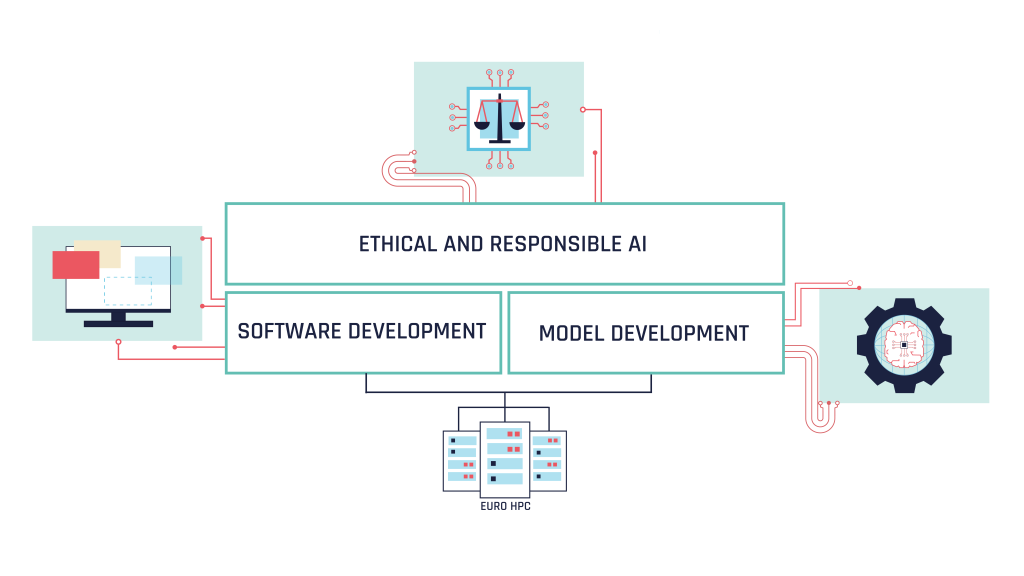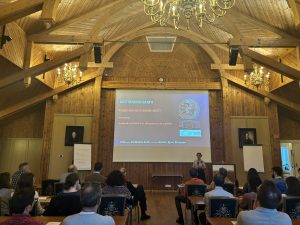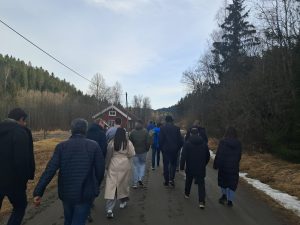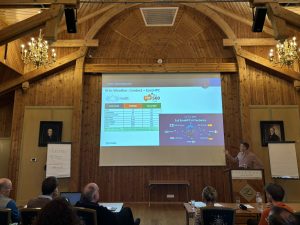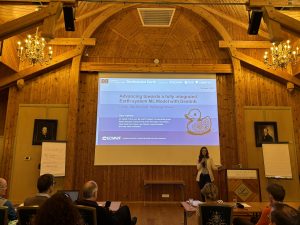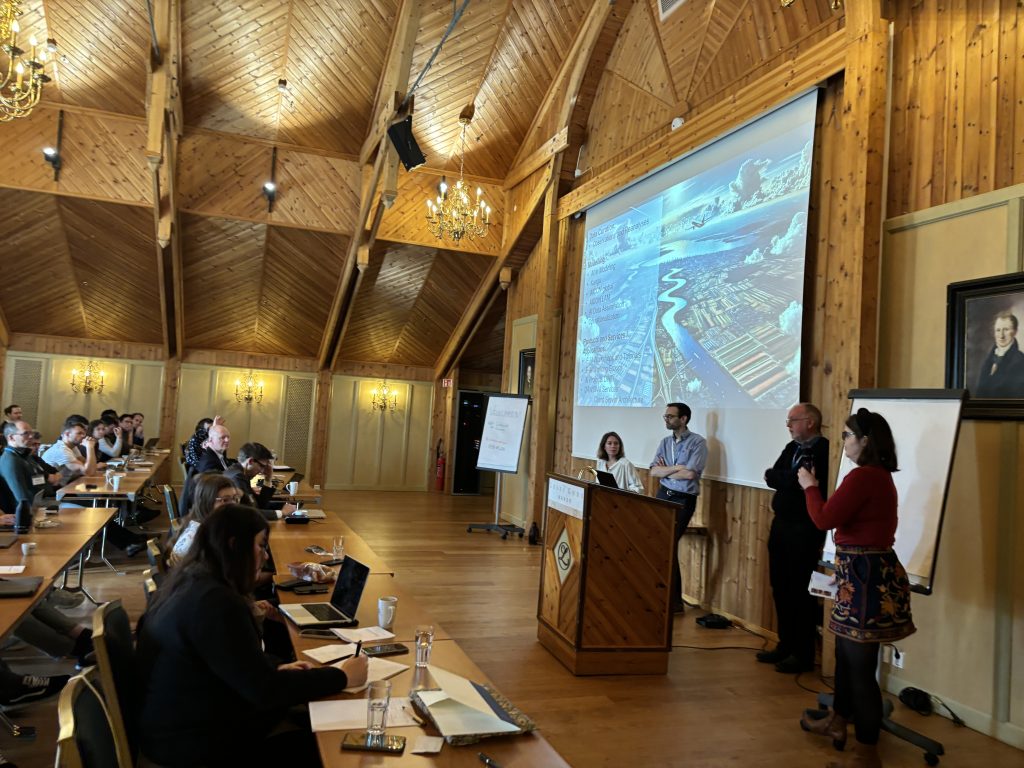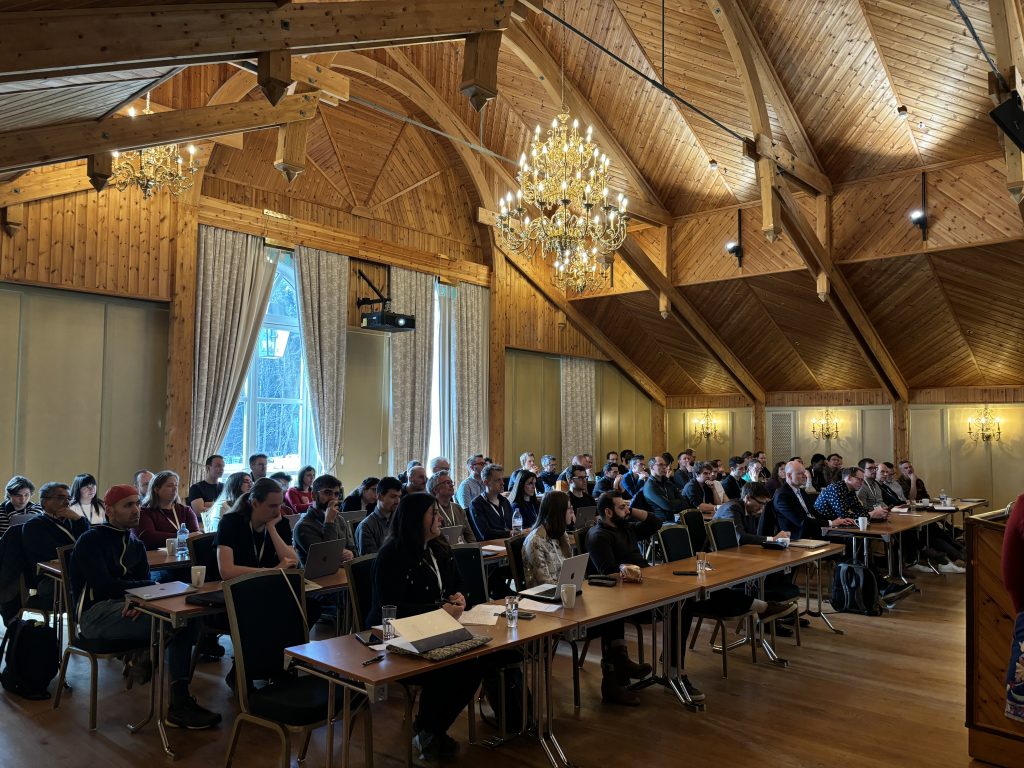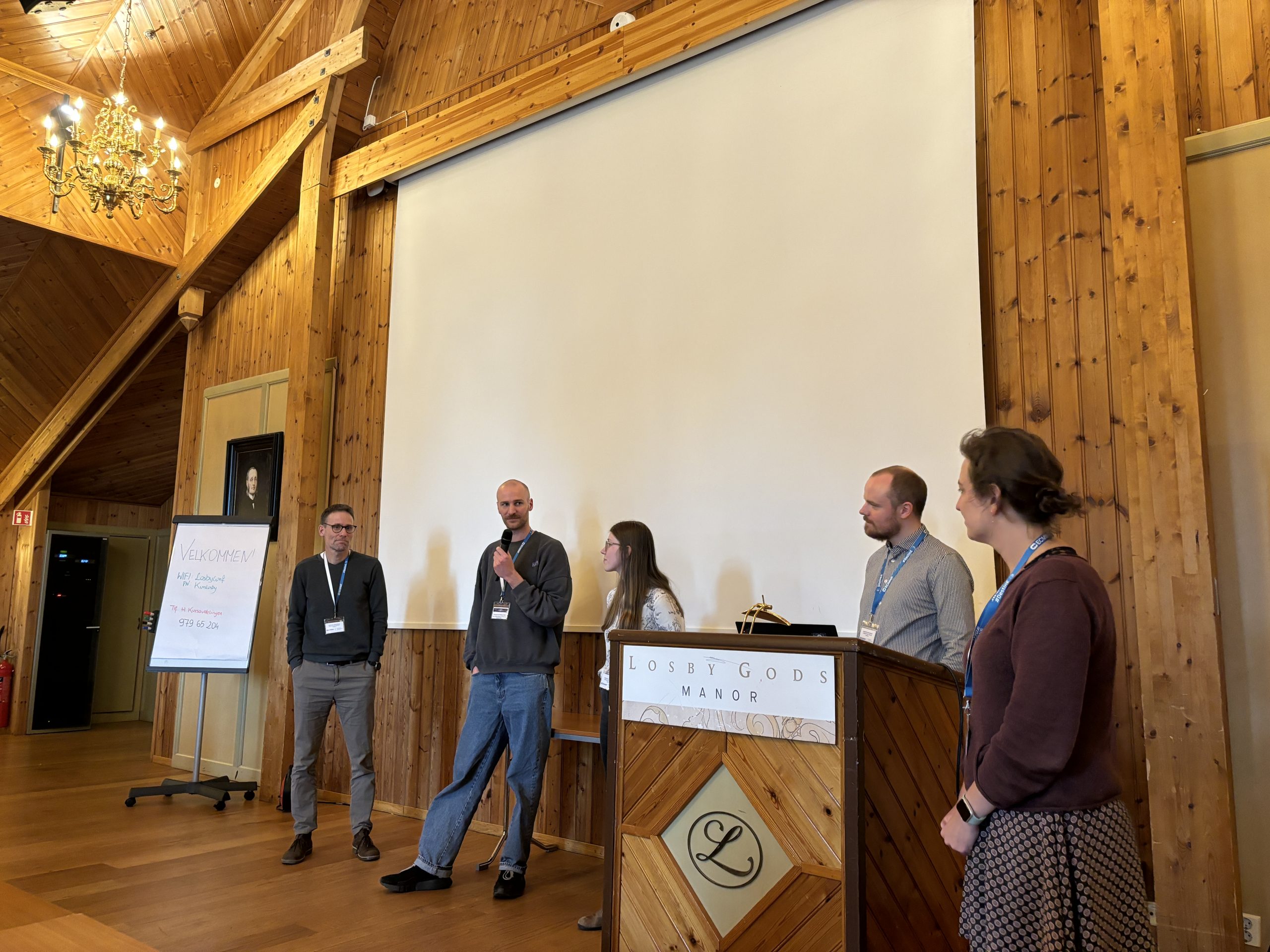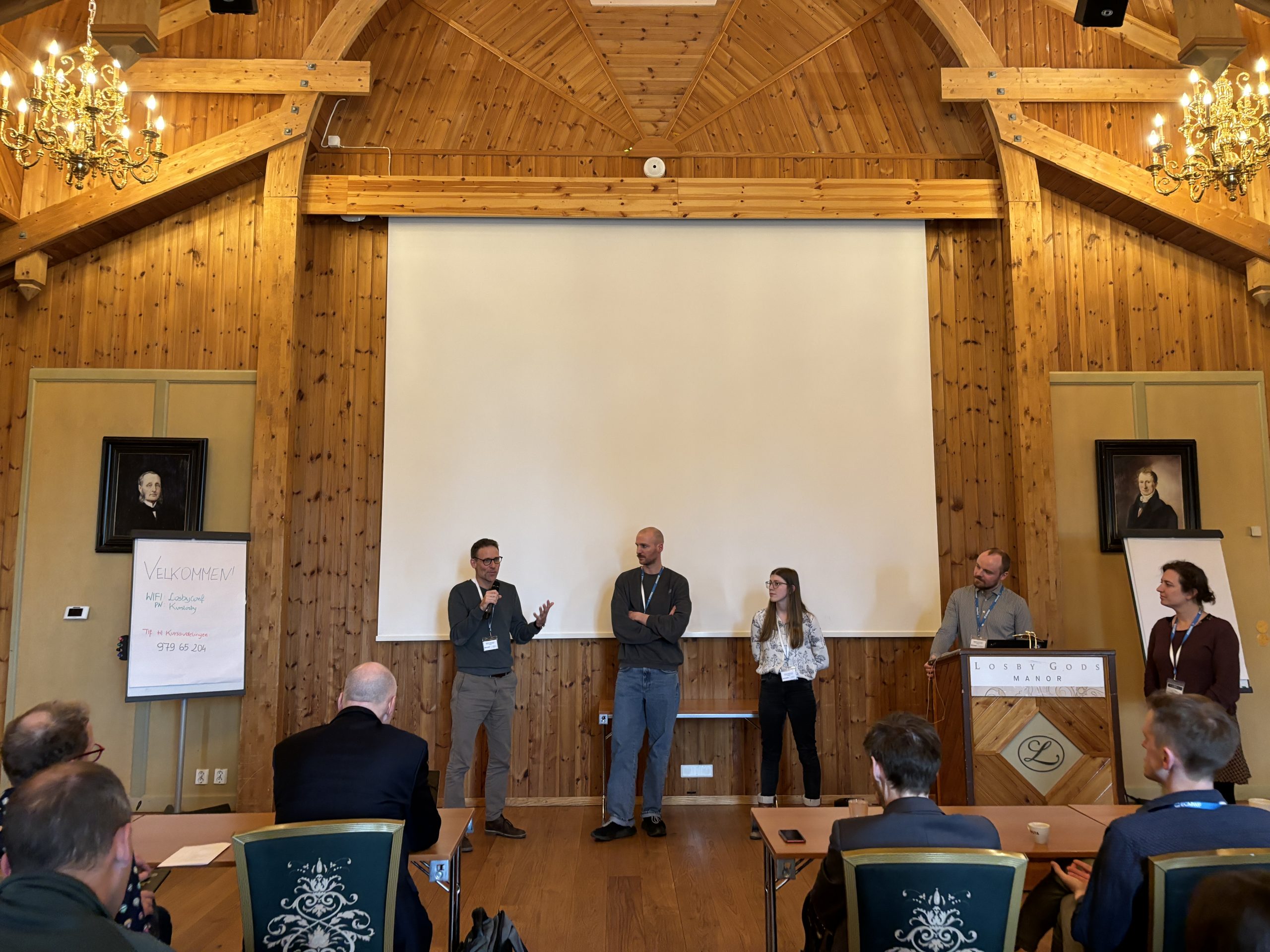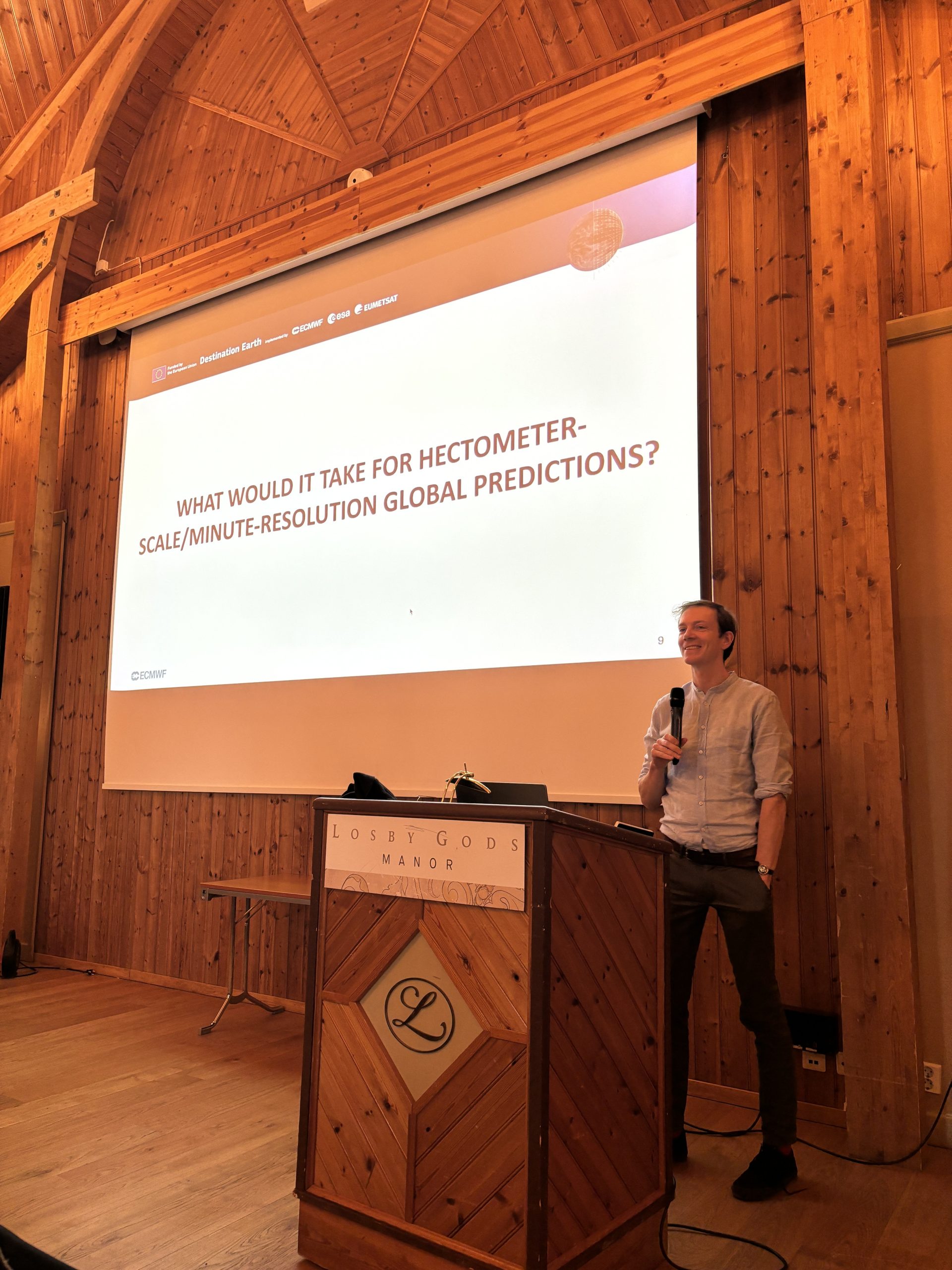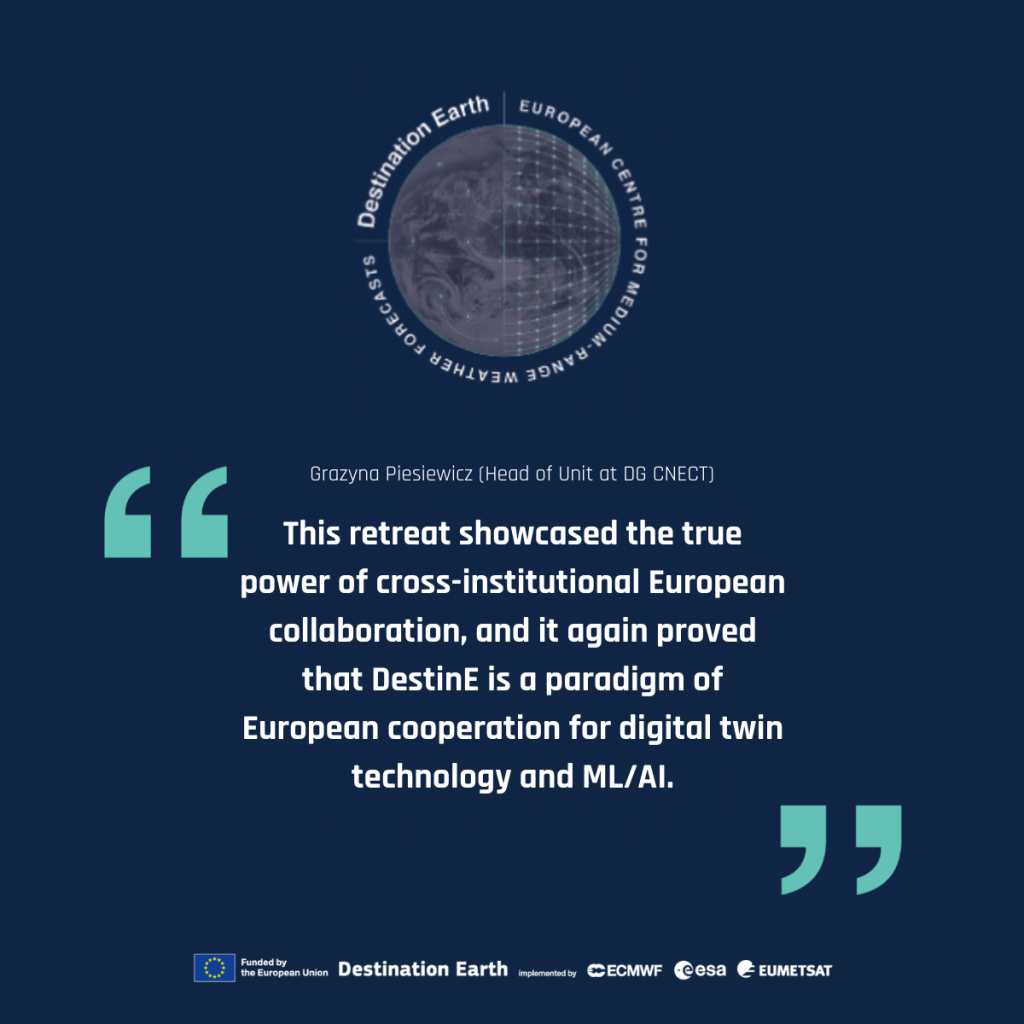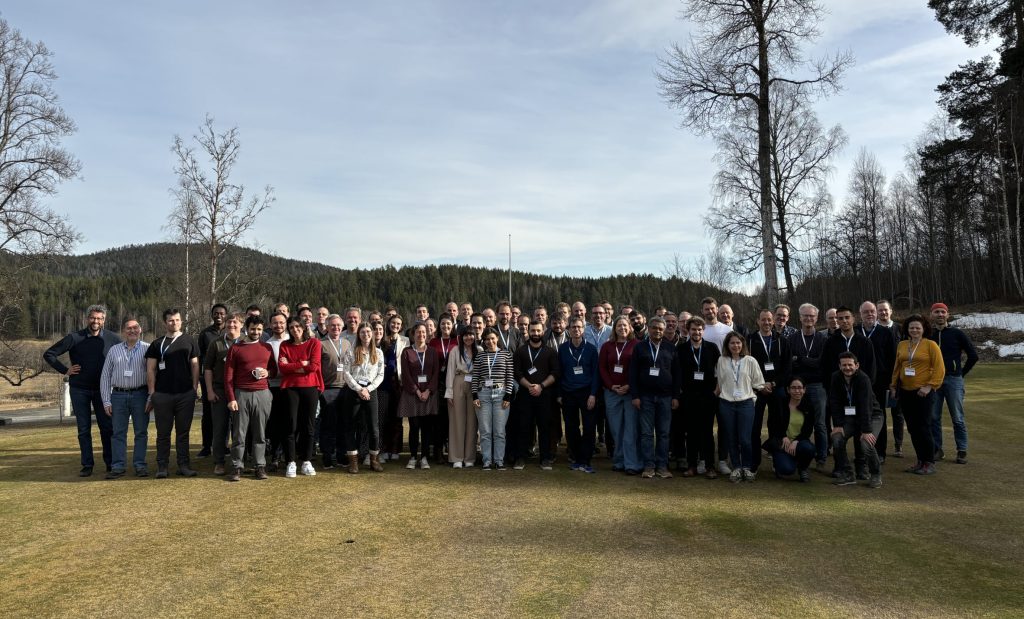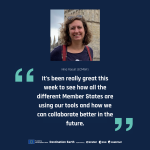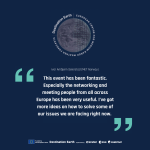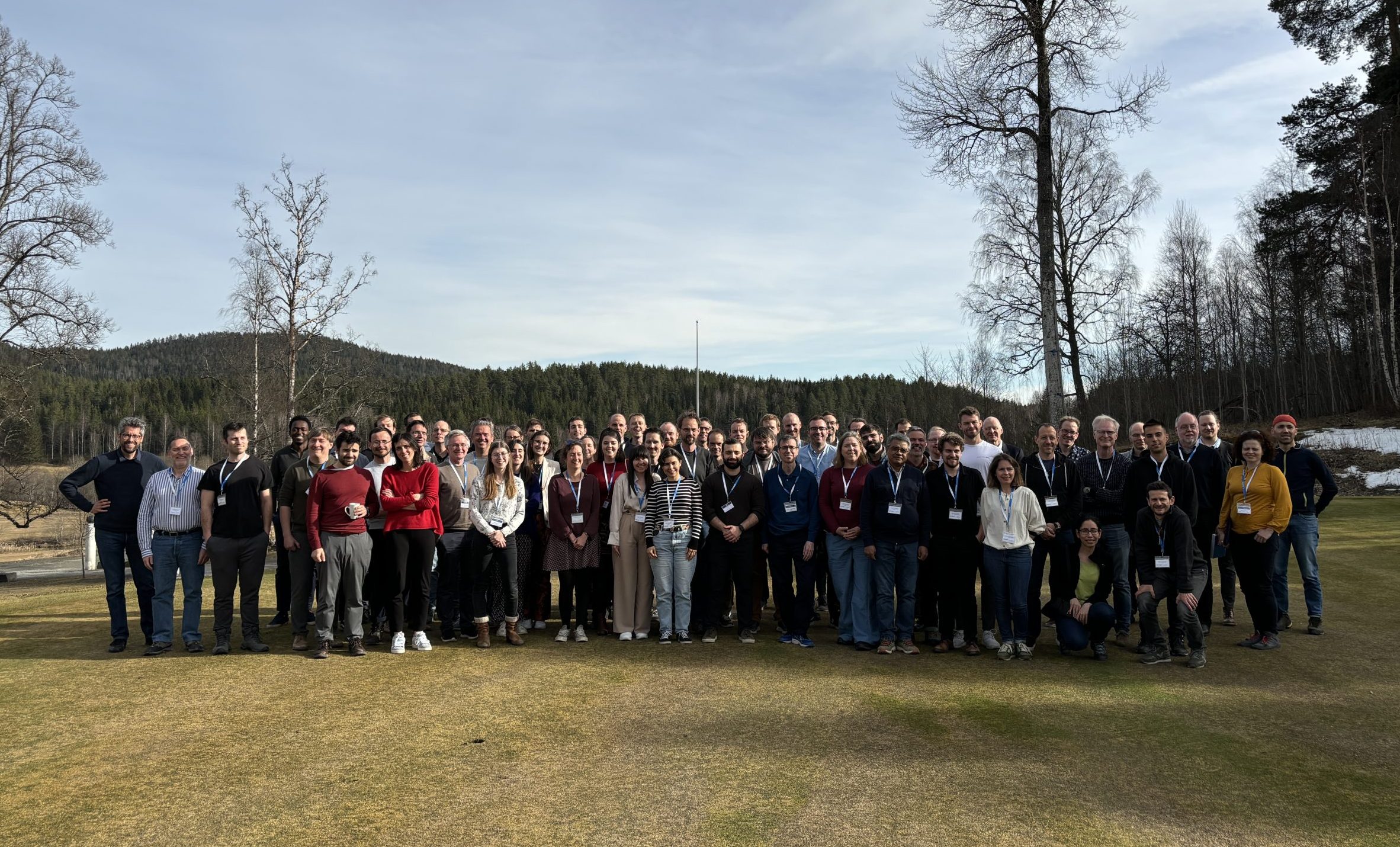
A deep dive into the Destination Earth Machine Learning Retreat in Norway
A deep dive into the Destination Earth Machine Learning Retreat in Norway
Since the launch of the second phase of the EU-funded DestinE initiative in June 2024, it’s been remarkable to see artificial intelligence and machine learning take on an increasingly central role. At its core, DestinE is developing digital twins of the Earth system to support European countries in responding and adapting to a changing climate and extreme weather events. A variety of machine learning activities are now undertaken to strengthen DestinE’s capabilities. The ML-driven models currently in development for various Earth system components will enhance our ability to quantify uncertainty in simulations and the interactivity of the DestinE system— leveraging the EuroHPC’s world-class supercomputing infrastructure.
Beyond driving innovation within the initiative, DestinE ML activities also build on and connect with complementary initiatives led jointly by ECMWF and its Member States, all represented at the Oslo retreat. The rapid progress in DestinE builds on the work of the ML pilot project and the development of Anemoi –the open-source framework now powering multiple state-of-the-art data-driven forecasting models in Europe, including ECMWF’s recently operationalised Artificial Intelligence Forecasting System (AIFS).
These rapid developments in ML-driven Earth system modelling raise important technical and strategic questions—questions that shaped the agenda of the retreat itself. Participants came together to reflect on and share recent breakthroughs in applying data-driven approaches to weather and climate prediction, explore how these capabilities could be scaled toward Earth system modelling from hours to decades ahead, and strengthen synergies between the many complementary initiatives emerging across Europe.
The DestinE ML retreat gathered leading weather and climate organisations from 14 European countries, along with a representative from the European Commission’s Directorate-General for Communications Networks, Content and Technology (DG CNECT) who leads the implementation of DestinE. The participants shared insights, aimed at aligning ongoing efforts, and at charting a path toward sustaining a strong, collaborative, European leadership in the field of machine learning for Earth system weather and climate prediction.
Day 1: Setting the scene and sharing ambitions
The retreat began with an informal and engaging icebreaker, during which participants had the opportunity to get to know each other in small groups. Participants reflected on shared priorities in developing ML models for the Earth system, and the intention of finding new ways to overcome common challenges through targeted collaborations quickly became clear. Topics of interest included advancing machine learning models to higher resolutions, exploring spatiotemporal downscaling techniques, simulating global warming with ML, improving predictions of high-impact events such as tropical cyclones and droughts, and enhancing the overall efficiency of ML-driven forecasting.
What made this event particularly special was not only the science but also its format. Instead of jumping straight into lecture-style presentations, attendees stepped outside for “Walking Dialogues” through the surrounding forest. These walks offered them a chance to connect, spark initial discussions, and take in the scenic Norwegian landscape.
Back indoors, a series of scene-setting talks framed the goals of the retreat. Irina Sandu, Director for Destination Earth at ECMWF, highlighted that the combination of high-resolution digital twin data, large-scale European collaboration, and the world’ class supercomputers of EuroHPC opens exciting opportunities to advance AI-based Earth system modelling and positions our European community at the forefront of the international landscape.
Moving forward, the Strategic Lead for Machine Learning at ECMWF, Matthew Chantry, gave an insightful overview of the rapid progress in ML-based forecasting at ECMWF and its Member States, and the session concluded with a presentation from Sarah Hahner, Machine Learning Scientist at ECMWF, who showcased the advancements towards an ML-based Earth system model in DestinE, building on the AIFS and the Anemoi framework.
The energy and focus of the retreat were perhaps best captured by Jørn Kristiansen, Director of the Development Centre for Weather Forecasting at the Norwegian Meteorological Institute (MET Norway). In his opening remarks, he summarised the overarching goal shared by all participants: “to foster collaboration and accelerate innovation in data-driven modelling for weather and climate science across Europe”.
 Here’s how Jørn put it:
Here’s how Jørn put it:
| . |
Michiel Van Ginderachter from the Royal Meteorological Institute of Belgium (RMI) showcased the Anemoi capabilities in Limited Area Model configurations, emphasising the flexibility of this setup for small, high-resolution domains. The plurality of approaches enabled by the Anemoi ecosystem was one of the highlights that emerged from the day, and it will be extremely interesting to see where the next months bring us in this respect, and how DestinE will benefit from these collaborative developments.
Finally, Simon Christiansen from the Danish Meteorological Institute (DMI) outlined his experience with Neural-LAM, an alternative framework to anemoi for building graph-based ML models. Simon’s presentation highlighted that a diversity of approaches and tools is instrumental in testing new ideas and swiftly moving this field forward. At the same time, he stressed the importance of publishing open datasets accessible across different tools to strengthen the European weather community in its entirety.
Later in the day, an open discussion led by ECMWF scientist Christian Lessig focused on challenges in achieving high-resolution data-driven modelling. While some participants argued that such ML-based predictions at high and spatial resolutions might be far off, others were more optimistic – thinking that such breakthroughs are perhaps closer than we think.
This session again underlined the importance of working together across European boarders: together we can not only learn from, but also challenge each other to achieve even more in a short amount of time.
Fireside chat towards a united European vision for ML and weather and climate forecasting
That evening, everyone gathered for a “Fireside Chat” moderated by Florian Pappenberger, Deputy Director-General and Director of Forecasts and Services at ECMWF. The panel included Grazyna Piesiewicz (Head of Unit in the European Commission’s DG CONNECT), Roar Skålin (Director General at MET Norway), Roland Potthast (Director for Meteorological Modeling and Analysis at DWD), Mark Liniger (Head Service and Development at MeteoSwiss), and Laure Raynaud (Team Leader Weather Forecasting & AI at Météo-France).

Set in a relaxed but thought-provoking atmosphere, the conversation explored the current momentum of AI innovation in Europe, which brings a shift from national efforts to large-scale, cross-border collaborations. This is clearly demonstrated by the ML initiatives led by ECMWF and its Member States, DestinE, and the European Commission’s emerging “AI Factories” – designed specifically for ML applications and to set to bring the EuroHPC resources to unprecedented levels.
The panellists shared their unique perspectives on a range of timely topics. These included how AI Factories can drive faster, smarter responses to climate and extreme weather events, the integration of ML with traditional physical modelling approaches, and the evolving role of national meteorological services in the context of the recent AI breakthroughs. As the discussion unfolded, themes of collaboration, transparency, and trust in AI systems were emphasized. Panellists highlighted that while ML is transforming the landscape, physics-based models remain essential for now—and a successful approach lies in integrating the two.
The session ended with an open Q&A, in which attendees had the opportunity to engage with the panellists. Florian Pappenberger concluded the session by saying that what emerged was a clear message: Europe has the talent, the tools, and the collaborative spirit needed to lead the next wave of innovation in AI-driven and deliver enhanced weather and climate services.
Outcomes, benefits and promises for fostering European AI collaboration
Rather than producing a list of outcomes, the retreat served as a springboard for deeper, consolidated, partnerships and clearer priorities. Among them: improving coupling between models, advancing resolution, and ensuring methods are scalable on high-performance computing systems. The discussions also shed light on major challenges ahead—from ensuring trust in ML outputs and overcoming data scarcity to making AI models more generalisable across timescales and domains.
Still, the promise is clear. Machine learning isn’t replacing physics-based models, but it is complementing and enhancing them. It offers the potential to deliver faster, more adaptive, and more interactive prediction systems—at lower computational costs—empowering policymakers and users alike with better information.
To hear more about where we’re headed, listen to some reflections from participants below:
Interviewees in order of appearance: Stefanie Hollborn (DWD), José Gonzalez-Abad (Predictia), Gabriela Aznar Siguan (Meteo Swiss), Rilwan Adewoyin (ECMWF), Sophie Buurman (KNMI).
We asked some of our participants about their work and what they are taking away from the DestinE ML Retreat.
Here are their answers:
Amanda Duarte (BSC)
Antonio Vocino (Italian Meteorological Service)
Eleni Briola Danish Meteorological Institute (DMI)
Sara Hahner (ECMWF)
Destination Earth is a European Union funded initiative launched in 2022, with the aim to build a digital replica of the Earth system by 2030. The initiative is being jointly implemented by three entrusted entities: the European Centre for Medium-Range Weather Forecasts (ECMWF) responsible for the creation of the first two ‘digital twins’ and the ‘Digital Twin Engine’, the European Space Agency (ESA) responsible for building the ‘Core Service Platform’, and the European Organisation for the Exploitation of Meteorological Satellites (EUMETSAT), responsible for the creation of the ‘Data Lake’.
We acknowledge the EuroHPC Joint Undertaking for awarding this project strategic access to the EuroHPC supercomputers LUMI, hosted by CSC (Finland) and the LUMI consortium, Marenostrum5, hosted by BSC (Spain) Leonardo, hosted by Cineca (Italy) and MeluXina, hosted by LuxProvide (Luxembourg) through a EuroHPC Special Access call.
More information about Destination Earth is on the Destination Earth website and the EU Commission website.
For more information about ECMWF’s role visit ecmwf.int/DestinE
For any questions related to the role of ECMWF in Destination Earth, please use the following email links:
